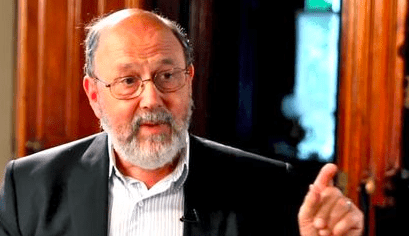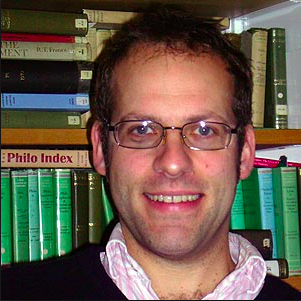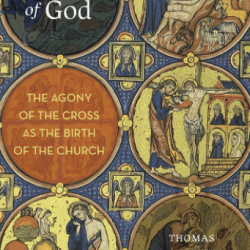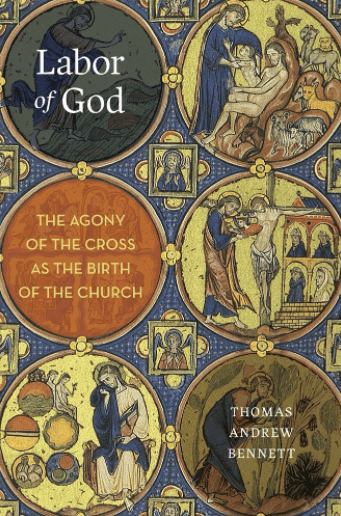 The narrative or the story into which one places the cross determines both the problem and the result. If the problem is wrath, the solution is pacification. If the problem is enmity, the solution is reconciliation. If the problem is slavery, the solution is liberation. Each of these, at one time or another, has been the fashionable atonement theory of the day. But in NT Wright’s The Day the Revolution Began, a “what if” question is asked, and I shall get to this in what follows. (For a course NT Wright is developing on this, see here.)
The narrative or the story into which one places the cross determines both the problem and the result. If the problem is wrath, the solution is pacification. If the problem is enmity, the solution is reconciliation. If the problem is slavery, the solution is liberation. Each of these, at one time or another, has been the fashionable atonement theory of the day. But in NT Wright’s The Day the Revolution Began, a “what if” question is asked, and I shall get to this in what follows. (For a course NT Wright is developing on this, see here.)
One of the more stunning themes in the history of theology is how long it took for a theory of atonement to develop and, frankly, when it did (let’s say Anselm) it didn’t immediately become the go-to theory or anything like a consensus, and no atonement theory ever was captured in the ecumenical creeds. Cross was effective in sacrament and in faith, and how that happened was not a major concern of theologians (then, and unlike for many today). Hence, Wright:
Before we go any farther in this inquiry, let’s make one thing clear. You do not have to be able to answer the question before the cross can have this effect. Think about it. You don’t have to understand music theory or acoustics to be moved by a wonderful violin solo. You don’t have to understand cooking before you can enjoy a good meal. In the same way, you don’t have to have a theory about why the cross is so powerful before you can be moved and changed, before you can know yourself loved and forgiven, because of Jesus’s death. 12
But we are called at least to give it our best look:
It may indeed be true that we can scarcely “take it in.” It may even be ultimately true, as one popular contemporary jingle has it, that “I’ll never know how much it cost to see my sins upon that cross.” Though since the New Testament does tell us precisely what it cost (the blood of God’s own son), and since the jingle in question is as confused in theology as it is deficient in rhyme, we are not much farther ahead. But—and this is the point of writing this book—I believe it is vital that we try. 17
Sometimes how people talk about the cross stuns us into wondering what in the world is being taught. What is being said reveals at times a God who is a tyrant or arbitrary or worse. Notice this from Wright:
The day after I wrote that last sentence I received an e-mail that included a link to a short video claiming to sum up the gospel in a way that, I was told, I would find refreshing. It would build up my faith. Intrigued, I watched it. It was well put together, with clever sequences and plenty of hi-tech touches. But at the center of the message was a line that made my blood run cold. The video had described how we all mess up our lives, how we all do things that spoil God’s world, and so on. Then said the narrator, “Someone has to die,” and it turned out, of course, to be Jesus. That sums up the problem. What kind of “good news” is that? What kind of God are we talking about once we say that sort of thing? If God wants to forgive us, why can’t he just forgive us? (Voltaire famously suggested God would indeed forgive us, since after all that was his job.) Why does “someone have to die”? Why death? Why would that help? And could it just be ‘someone,” anyone? Did it have to be God’s own son? How does it all work?
Wright continues by the big reminder that if we believe God is love then the cross ought to be shaped by love, not by hatred:
The danger with this kind of popular teaching—and examples of it are not hard to come by—is that ultimately we end up rewriting one of the most famous verses in the Bible. I already quoted the King James, Version of John 3:16: “God so loved the world, that he gave his only begotten Son.” Look at the two verbs: God so loved the world that he gave his son. The trouble with the popular version I have described is that it can easily be heard as saying, instead, that God so hated the world, that he killed his only son. And that doesn’t sound like good news at all. If we arrive at that conclusion, we know that we have not just made a trivial mistake that could easily be corrected, but a major blunder. We have portrayed God not as the generous Creator, the loving Father, but as an angry despot. That idea belongs not in the biblical picture of God, but with pagan beliefs. 43
So Wright is asking the bigger question, the question that ties together all of history — creation to new heavens and new earth — and asking, “What if we connect cross to the big picture?”
What might happen if, instead of an ultimate vision of saved souls going to heaven, we were to start with the eschatology of Ephesians 1:10, with God’s plan to sum up all things in heaven and earth in the Messiah? What if, instead of a disembodied “heaven,” we were to focus on the’biblical vision of “new heavens and new earth,” with that renewal and that fusion of the two created spheres taking place in and through Jesus himself? What if, instead of the bare going to heaven,” we were to embrace (along with theologians like John Calvin) the biblical vocation of being the “royal priesthood”? What would happen if we thought through the ongoing cross-shaped implications, writ large as they are in the New Testament, of the once-for-all event ofjesus’s death? What difference might that make to our view of salvation—including once more its philosophical and political dimensions? How, in other words, does the cross fit into the larger biblical narrative of new creation? What would happen if, instead of seeing the resurrection (both of Jesus and of ourselves) as a kind of happy addition to an otherwise complete view of salvation, we saw it as part of its very heart? 49










